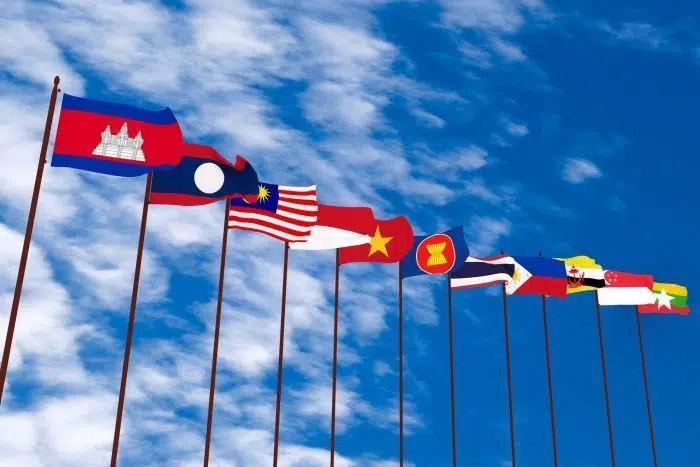ASEAN: The Association of Southeast Asian Nations
‘One Vision, One identity, One Community’
The Association of Southeast Asian Nations or ASEAN is a regional based transnational organization with the objectives of facility the cooperation and economic integration amongst its members.
History of ASEAN
The Association of Southeast Asian Nations, was established on 8 August 1967 in Bangkok, Thailand, with the signing of the ASEAN Declaration (Bangkok Declaration) by the Founding Fathers of ASEAN, namely Indonesia, Malaysia, Philippines, Singapore and Thailand. Brunei Darussalam then joined on 7 January 1984, Vietnam on 28 July 1995, Lao PDR and Myanmar on 23 July 1997, and Cambodia on 30 April 1999, making up what is today the ten Member States of ASEAN.
At present day the organization is formed by ten member states (Brunei, Cambodia, Indonesia, Laos, Malaysia, Myanmar, the Philippines, Singapore, Thailand, and Vietnam) with Papua New-Guinea and Timor Leste as observers for a potential inclusion of this countries as full right members in the future.
Objectives of ASEAN
As set out in the ASEAN Declaration, the aims and purposes of ASEAN are:
- To accelerate the economic growth, social progress and cultural development in the region through joint endeavors in the spirit of equality and partnership in order to strengthen the foundation for a prosperous and peaceful community of Southeast Asian Nations;
- To promote regional peace and stability through abiding respect for justice and the rule of law in the relationship among countries of the region and adherence to the principles of the United Nations Charter;
- To promote active collaboration and mutual assistance on matters of common interest in the economic, social, cultural, technical, scientific and administrative fields;
- To provide assistance to each other in the form of training and research facilities in the educational, professional, technical and administrative spheres;
- To collaborate more effectively for the greater utilization of their agriculture and industries, the expansion of their trade, including the study of the problems of international commodity trade, the improvement of their transportation and communications facilities and the raising of the living standards of their peoples;
- To promote Southeast Asian studies; and
- To maintain close and beneficial cooperation with existing international and regional organizations with similar aims and purposes, and explore all avenues for even closer cooperation among themselves.
ASEAN today
Southeast Asia is one of the world’s fastest-growing markets—and stills one of the least well known.
ASEAN is one of the largest economic zones in the world; growth has been rapid and relatively stable since 2000. With a total population of 625 million people if ASEAN were a single country, it would already be the seventh-largest economy in the world, with a combined GDP of $2.4 trillion in 2016.
With a strategic and privileged commercial emplacement -the Malacca Strait; world’s second-busiest waterway, as a best example-, a rising middle-class households, an average 4.8% annual growth and with other vigorous economic indicators ASEAN community it is projected to rank as the fourth-largest economy by 2050.
With 105 million visitors crossing its borders from abroad in the last 2016 also indicates the region as one of the most popular tourist destinations in the world. All this factors combined shows the importance of the area as trade and travel hub at present day.


